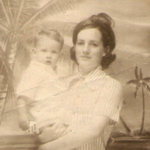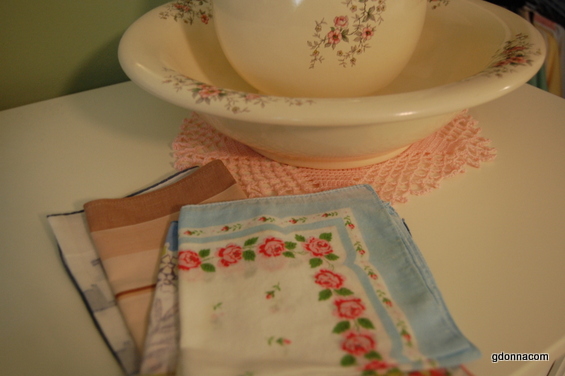
I recently realized that carrying a handkerchief has become a very vintage thing. We live in such a disposable society that there seems to be very few of us that still carry a handkerchief.
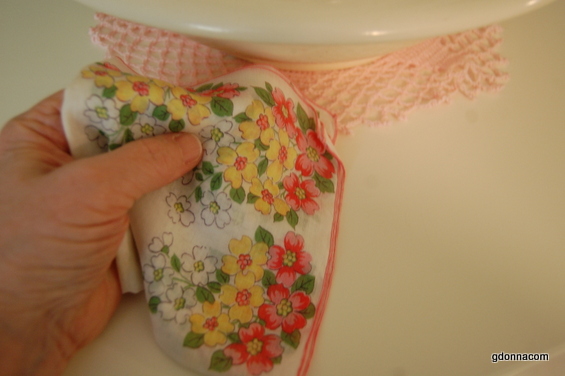
I still have some of my handkerchiefs from when I was a child and have purchased more through the years and this handkerchief has wiped away many a tear through time as well as noses.
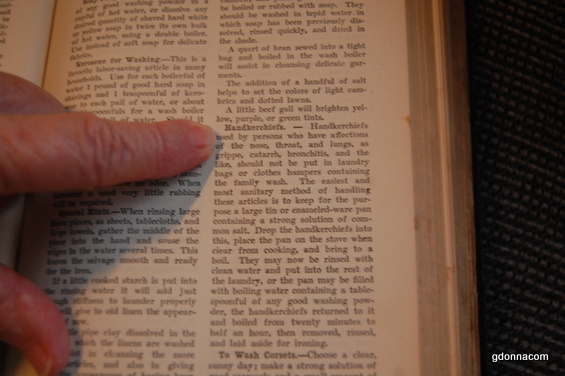
This post is how to wash handkerchiefs as instructed in 1913.
This reads as;
Handkerchiefs used by persons who have affections of the nose, throat, and lungs, as grippe, catarrh, bronchitis, and the like, should not be put in laundry bags or clothes hampers containing the family wash. The easiest and most sanitary method of handling these articles is to keep for the purpose a large tin or enameled-ware pan containing a strong solution of common salt. Drop the handkerchiefs into this, place the pan on the stove when clear from cooking, and bring to a boil. They may now be rinsed with clean water and put into the rest of the laundry, or the pan may be filled with boiling water containing a tablespoonful of any good washing powder, the handkerchiefs returned to it and boiled from twenty minutes to half and hour, then removed, rinsed and laid aside for ironing.

We keep a special pot in our laundry area just for boiling handkerchiefs, socks and small items. I had an old enamel one but I used it for the purpose of melting beeswax that I get from a local bee keeper. Now that is dedicated for beeswax. I picked this on up at a thrift store for a dollar. We also have a large pot too but it hardly ever gets used this day and time but if we had a emergency outage we have it.
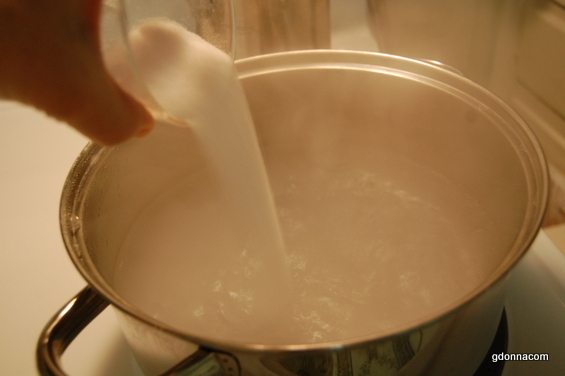
So following along I am adding a half cup of regular table salt to about 2 and half quarts of water I only have three handkerchiefs that need washing. My husband was helping someone during very hot weather in a very dirty old storage building and now his sinuses are a problem. So we are doing the boiling method today.
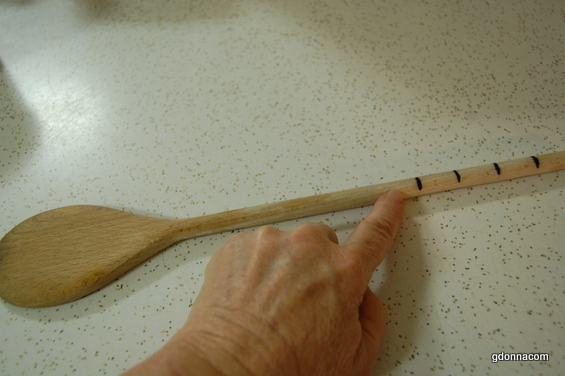
I keep a long wooden spoon in the laundry area for this purpose. I marked the handle a while back so I never mix up this spoon with the others. I keep everything in the area it is suppose to be in.
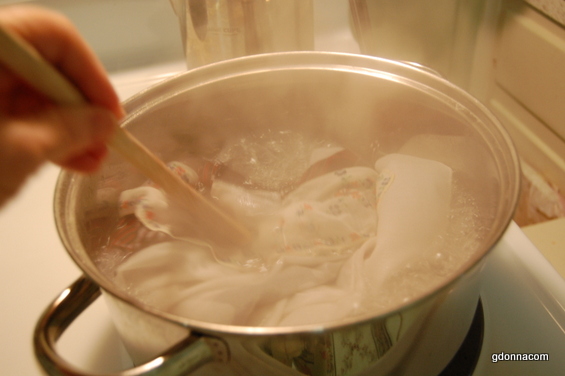
Now the handkerchiefs are in the boiling salt water.
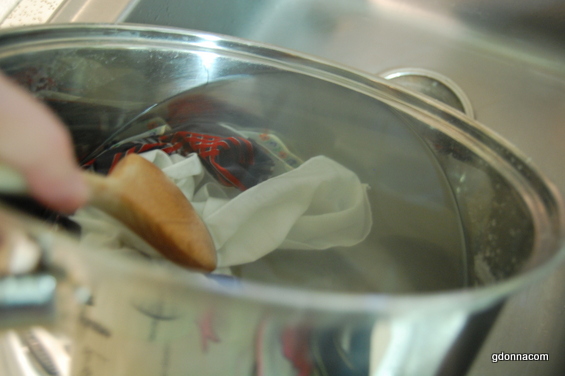
I am pouring the water down the drain. This was difficult to take because I could not hold the camera and pour boiling water.
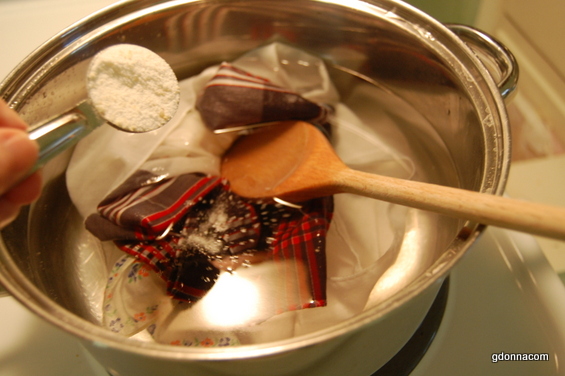
So I rinsed the pan and handkerchiefs from the salt water and put it back on the stove with new water and ow adding one tablespoon of laundry powder. This is my homemade laundry powder. Equal parts grated pure soap, borax and washing soda. This would be a recipe they would have used back then.
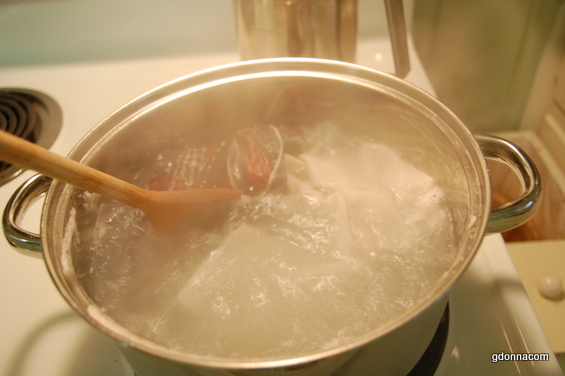
So now I am boiling the handkerchiefs in the soapy water. You have to stay with this to not let it boil over because at first it wants to be sudsy and once to boil settles after you turn it down it is not as bad. Then you need to keep pushing the handkerchiefs down into the boiling water. Picture the big black pot outside with the women in their aprons and sweat beading from everywhere and they have the long handled sticks pushing down the clothes.

Now remove the handkerchiefs from the boiling soapy water and place it in a pan to rinse.
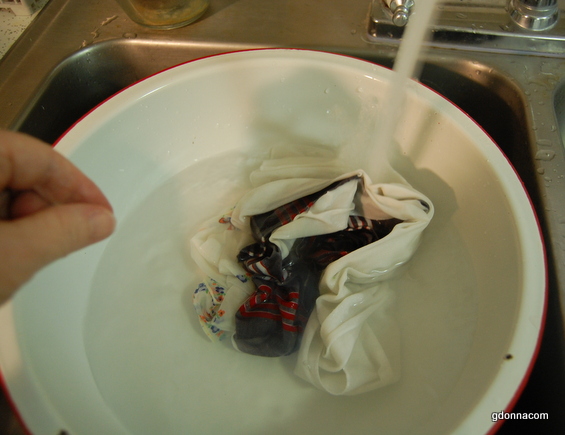
Rinse several times until clear.
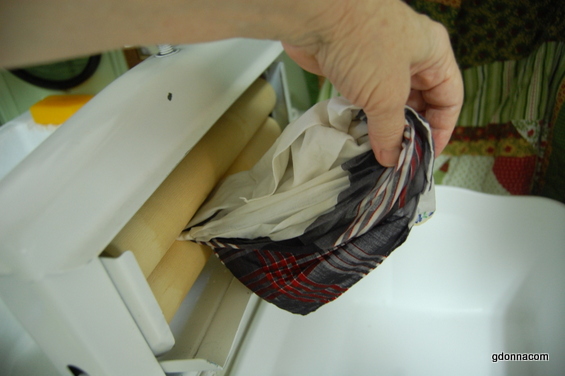
Squeeze by hand or put it through your wringer.
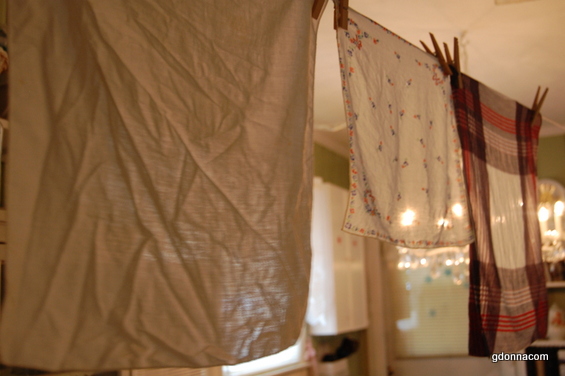
Hang to dry in the sunshine. There was no sunshine this morning because it rained last night but if there was this would be out in the bright sunshine because the sun is also good for disinfecting.
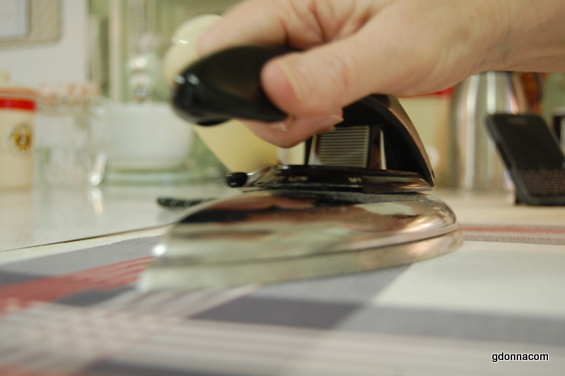
Now iron the handkerchiefs. My mother always insisted for the handkerchiefs to be ironed. Ironing is also another way to disinfect due to the heat and steam.
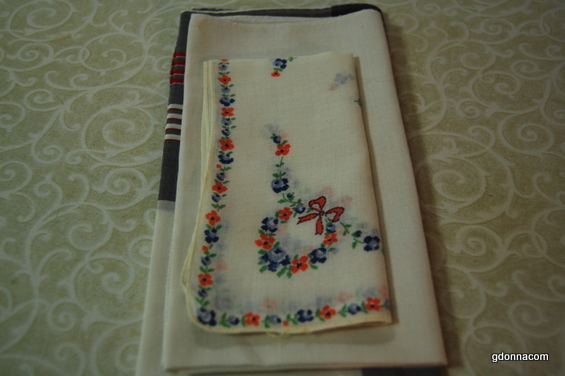
Now these old handkerchiefs are ready to be put back in a pocket or purse. My husband goes out the door every morning with a clean handkerchief in his back pocket. This is the old way.
Grandma Donna
